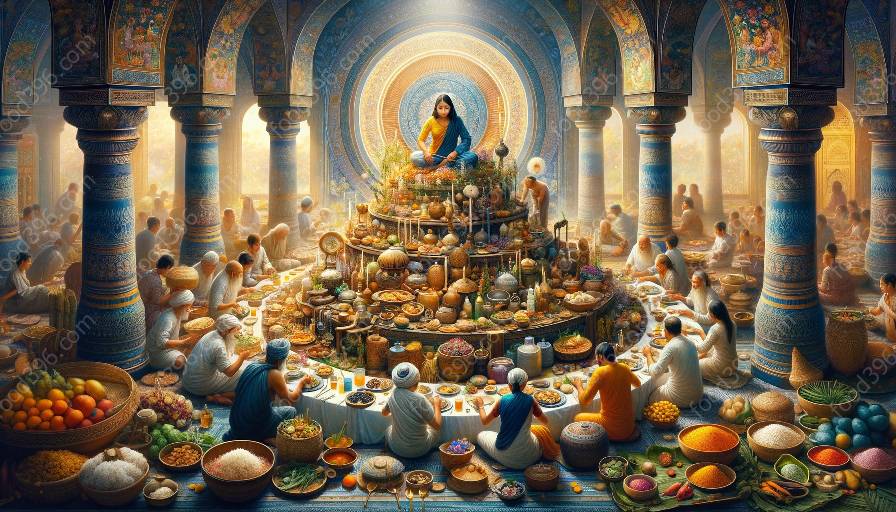Food symbolism has been a significant aspect of human culture and history, permeating various forms of artistic expression, literary works, and mythical stories. This exploration delves into the rich tapestry of food symbolism and its intersections with rituals, culture, and history.
Food Symbolism in Art
Throughout history, artists have employed food as a powerful symbol in their works, often conveying deeper meanings and narratives. In still-life paintings, fruits, and vegetables are often depicted to represent abundance, prosperity, and the fleeting nature of life. For instance, the ripe pomegranate in 'Still Life with Pomegranates and Porcelain Bowl' by Giovanna Garzoni symbolizes fertility and the cycle of life. Similarly, in religious art, grapes and bread are used to symbolize the blood and body of Christ in Christian iconography.
Food Symbolism in Literature
Literature, too, abounds with food symbolism, where authors employ food as a metaphor for complex emotions, social dynamics, and spiritual concepts. In 'Like Water for Chocolate' by Laura Esquivel, the protagonist's emotions are infused into the food she prepares, affecting the consumers in profound ways. In 'Alice's Adventures in Wonderland' by Lewis Carroll, the symbolic significance of food is showcased through the magical, transformative properties of eating and drinking in the fantastical world created by the author.
Food Symbolism in Mythology
Mythology from diverse cultures has often utilized food as a symbol to convey powerful messages and concepts. In Greek mythology, pomegranates are associated with the underworld and fertility, intertwining the themes of life and death. The Norse mythology features the golden apples of immortality sought by the gods, representing the pursuit of eternal life and divine power.
Intersections with Food Rituals
Food symbolism is intricately linked with various rituals and traditions across different cultures. Whether it's the symbolic sharing of bread and wine in Christian Eucharistic rites or the elaborate culinary preparations for traditional Chinese New Year celebrations, food rituals carry profound meanings and connect individuals to their cultural heritage.
Exploring Food Culture and History
Understanding food symbolism also necessitates delving into the intricate tapestry of food culture and history. Traditional cuisines often embody symbolic meanings linked to historical events, geographical influences, and communal practices. For example, the association of particular foods with celebrations, rituals, and festivals reflects the cultural significance of these culinary traditions.
Conclusion
Food symbolism pervades the realms of art, literature, and mythology, weaving a rich tapestry of meanings and interpretations that resonate across human experiences. This exploration has provided a glimpse into the captivating ways in which food symbolism intertwines with rituals, culture, and history, enriching our understanding of the human experience.

